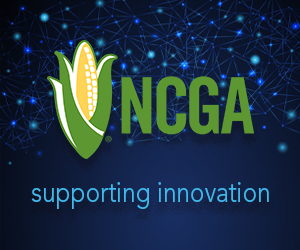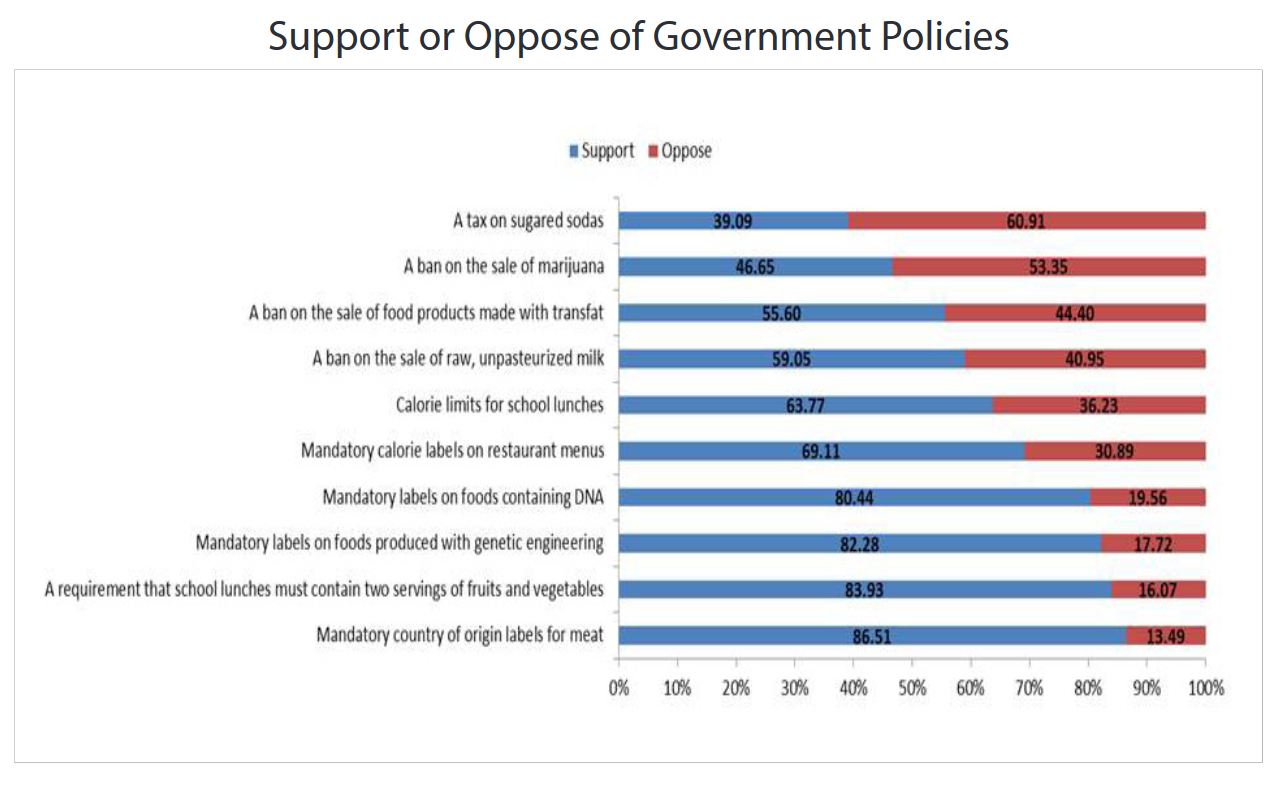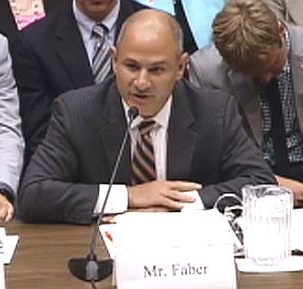Americans are easily riled about genetically modifying crops, animals and foods, even though research indicates they know little about how GMOs are produced. So, what about consumer understanding of a new and much different approach to precision breeding called gene editing?
There’s a big difference between what are usually referred to as GMOs and products produced through gene editing, but that has not stopped some activists from tying the two types of technologies together on social media and creating unnecessary fears. Add that to a general public misunderstanding of science and food production, and you have a budding recipe for confusion and misunderstanding.
For example, when the Washington Post ran an opinion piece recently by Purdue University President Mitch Daniels, a former Indiana governor, extolling genetically modified (GM) crops and saying it is immoral for society to prohibit them, the article generated 1,630 reader comments within two days.
 The remarks were typically emotional, angry or sarcastic and frequently displayed ignorance about genetic modification processes and products.
The remarks were typically emotional, angry or sarcastic and frequently displayed ignorance about genetic modification processes and products.
But even though Americans get their dukes up over GMOs, they may not understand why, says Michael Specter, veteran science writer for the New Yorker.
“I don’t think there are many people in this country who get up in the morning and say, ‘Oh, my god, I’m so happy we have GMO corn,’” Specter told people attending a gene editing conference, called CRISPRcon, last August at the University of California-Berkeley. Herbicide- or insect-resistant corn, he says, don’t hit people where they live, as would biotech remedies to wipe out malaria mosquitos and save lives.
“What matters is a connection to people on something they care about,” Specter said.
In general, Americans don’t like the idea of GMOs, even if they don’t know what they are. In a 2015 national survey, the Pew Research Center found that 57 percent of adults, including two of three women, consider food products with GMOs to be unsafe. About half – especially women and folks under 30 years old – say they watch for GMO listings on labels at least sometimes.
What’s more, it seems that nearly 90 percent of U.S. adults want food labels to indicate the presence of GMOs, according to a survey sponsored by Just Label It, a leading proponent of such labeling. Last year, in fact, Congress ordered that products must disclose scannable or printed GMO information, and regulations mandating such labeling are due out from USDA by mid-summer.
But those snapshots of Americans’ opinion on GMOs tell little about their understanding of food products and how they are created.
A Michigan State University Food Literacy and Engagement Poll asked 1,059 U.S. adults last summer, for example, if this statement is true: “Genetically modified foods have genes and non-genetically modified foods do not,” and 37 percent agreed, showing that many people just don’t know what genes or GMOs are.
Indeed, American consumers’ knowledge in biotechnology is hit and miss, agrees Dietram Scheufele, a professor in the Department of Life Sciences Communication at the University of Wisconsin. He noted that Oklahoma State University pollsters, in their 2015 Food Demand Survey, asked a thousand Americans if they want mandatory labeling of DNA in foods. The result: 80 percent said yes (See chart below.) Obviously, those respondents did not understand that DNA (deoxyribonucleic acid) is an essential part of all living organisms - organic, non-GMO or GMO.

Source: Jayson Lusk, Oklahoma State University
Note too, that the references here to Americans’ lack of knowledge about GMOs relate to transgenic cell modifications (between separate species), which have been happening in commercial products for decades. So. don’t look for Americans to have any vast awareness of the new non-transgenic techniques, like gene editing, which involve modifications strictly within a cell’s nucleus.
Nonetheless, when people see potential or assured benefits from biotech for their own bodies, they become more accommodating, Scheufele and others found in their 2017 survey, which questioned 1,600 adults about new human gene editing remedies in medicine.

Dietram Scheufele, Univ. of Wisconsin
“We found that 59 percent of respondents expressed at least some support for human genome editing to treat human medical conditions or restore health,” Scheufele said. Note, however, that only a third expressed even cautious support for such techniques if used to enhance or improve human mental or physical abilities or appearance.
But, he said, “with CRISPR (a popular new gene editing process in the laboratory), “we’re seeing some of those issues come together in people’s minds . . . the idea of having a more technically safer and efficient solution for editing than we’ve had in the past … and that is exciting.”
Can Scheufele’s findings in the medical sphere be equated with gene editing in agriculture?
“There are certain parallels and certain clear differences,” he said. Research shows people regard “their own bodies much differently than they would treat production agriculture.” On the other hand, he said, “with food, as soon as they start putting something into their bodies, it relates much closer to some of the findings that we’ve had” in research on human genetics.
Some factors emerge as important when people consider what is acceptable in any kind of genetic modification, whether gene edited or transgenic manipulations, Scheufele said. One is the respondents’ “religiosity,” which is offended when the scientist is seen as “blurring the lines between God and man.” People also commonly oppose genetic alterations they see as “unnatural,” he said.
Along with those sort of root moral and ethical criteria, the flow of information from news, internet communications, family and friends tends to shape views of biotechnology, Scheufele said. The consumer’s view of GMOs “is what popular discourse looks like,” he says. If popular discourse is dominated by references to a certain meat product as “pink slime” or a biotech strain of fast-growing salmon as “Frankenfood,” then “that is going to determine my decisions about GMO or GE products,” he says.
However, what do people familiar with biotech issues think about CRISPR and other gene editing laboratory tools?
Last summer’s CRISPRcon conference featured some instant polling of such a biotech-savvy crowd. Its more than 300 participants came from the life sciences, food and agriculture sectors, environmental and wildlife organizations, or were science news writers and so forth.
Given a multiple choice, 43 percent of participants who responded agreed that gene editing is “a tremendous tool to benefit mankind.” But they could select more than one answer, and 47 percent agreed that gene editing is all three of these things: “a tremendous tool . . . a technology that is poorly understood and needs more research . . . (and) a dangerous tool that could easily be used to the detriment of mankind.”
Not surprisingly, many big farm groups, food makers and retailers believe gene editing holds a lot of promise. In late 2016, several groups who were already members of the Center for Food Integrity (CFI) formed the Coalition for Responsible Gene Editing in Agriculture to promote gene editing to Americans as a smart direction toward efficient food production, healthy eating and environment. The coalition puts a premium on earning the trust of consumers for any gene editing processes or products, said Roxi Beck, CFI’s consumer engagement director.

CFI Chief Executive Charlie Arnot
Traditionally, said CFI Chief Executive Charlie Arnot. “the assumption has been, if the science is sound and the regulatory process is valid, there will be social acceptance” of new biotech products. “But we know from experiences with GMOs that isn’t the way it works in today’s environment.”
CFI’s research on consumer attitudes, Beck said, found that, although it’s still a priority in the coalition’s guidelines for biotech developers to present the facts around their discoveries clearly and honestly, “you don’t change (consumers’) ethics and beliefs with science and facts alone.”
In fact, she said, CFI’s research shows that “the facts are three to five times less important than connecting (with consumers) through shared values.” So, she says, biotech developers and food companies with a new product in the works need to ask, “Should we be doing this?” rather than, “Can we do this?’
As might be expected, the coalition defines gene editing in very attractive terms: “Gene editing makes precise, intentional and beneficial changes in the genetic material of plants and animals used in food production, which can improve their health and sustainability. This often mirrors changes that could occur in nature or through traditional breeding. Gene editing helps farmers keep pace . . . while using less water, land, nutrients and other resources.”
On the other hand, Arnot expects the coalition’s guidelines may change as its membership broadens, and he thinks public acceptance for GE won’t be easy.
“Our next step is to engage the food system … to begin to answer concerns that food companies may have about gene editing, what it might mean to their supply chain … to bring forth products with potentially improved shelf life or nutrition,” he says.
On the opposite biotech policy front, nearly all advocates of organic food and farming, many of them versed in biotechnology, are opposed to new GE techniques, just as they’ve been to earlier transgenic plant and animal products – at least in terms of any such biotech in organic production.
“As an organic community,” says Abby Youngblood, executive director of the National Organic Coalition, “we have a framework for looking at what is and what is not prohibited in organic, and we have definitions of what we mean when we talk about genetic engineering that align with international definitions that have been adopted by (world plant regulating bodies).”
Also, the U.S. organic program has “equivalency agreements with other countries,” Youngblood says, and “there is really broad agreement that gene editing is prohibited in organic production.”
Just Label It and others who don’t like GMOs agree with the organic folks and see gene editing as just another GMO category that ought to be indicated on labels. In its upcoming regs on GMO labeling, USDA “should consider the terms ‘genetic engineering,’ ‘genetic modification,’ and ‘biotechnology’ as interchangeable with ‘bioengineering,’” JLI wrote to USDA.

Scott Faber, Just Label It
“This should be simple,” says Scott Faber, JLI executive director. “Any product of genetic engineering, whether it’s transgenic or gene editing should be disclosed. Hiding information from consumers is a recipe for more mistrust” from consumers, and that isn’t in food industry interests, he said.
Youngblood, meanwhile, notes her coalition is also concerned that exclusive patents granted for gene editing laboratory processes or products might end up making valuable plant and animal genetics out of bounds to researchers trying to breed new varieties for organic production. “We have a concern about genetic material (not) remaining in the public realm,” she says.
“We are concerned about exclusive rights in that area, too,” from a global perspective and beyond the implications for organic production, said Jamie Love, director of Knowledge Ecology International. He says KEI and others with a stake in agriculture worldwide “think it’s a mistake to associate exclusive rights with that sort of technology.” GE technology “should be used as freely as possible … for research, but also so that people can actually benefit from it,” he says.
The odds of gene editing gaining favor in America any time soon aren’t clear. It is good to remember that acceptance of scientific discoveries can take what seems like ages. Galileo, for example, was convicted by a church Inquisition in 1633 for teaching that the Earth circles the sun and spent the last nine years of his life in house arrest because of that supposed heresy. Yet, today, only 76 percent of American adults believe the Earth circles the sun, and only 49 percent believe in human evolution, according to the 2016 National Science Board’s survey on Public Knowledge about Science and Technology.
Mindful of the deepening polarization over gene editing and GMOs in general, scientists at the University of Minnesota are trying what they call “cooperative governance networking” to tease out a public policy consensus on whether, when, and how GE could be used and developed in ways that would be acceptable to society.
UM Agronomy and Plant Genetics Professor Nicholas Jordan said his team began with the assumption that folks who’ve long objected to biotechnology in agriculture and “want to hold up genetic engineering … hold the upper hand.”
So, Jordan reasoned, “we will try to engage them in something they care about,” and thought gene editing in cover crops might be a place to start. There has been paltry investment and not much progress in cover crops, he said. But with climate change threatening, genetic advances are needed for winter-hardy grains, oilseeds and other crops to help them flourish.
He is working to make those advances happen with the Foundation for Food and Agricultural Research, environmentalists, soil scientists, plus venture capitalists who might consider developing new cover crop traits. He has also applied for a USDA grant.
Jordan says his project provides “an opportunity to take a look at the value of gene editing” from various perspectives. For investors, he says, getting favorable consensus from across the spectrum of stakeholders is a good way to reduce financial risk.
So, what is the future of GE in the U.S.?

Nina Federoff
Nina Fedoroff isn’t all that optimistic. Fedoroff, a molecular biologist with Penn State University and other institutions for nearly a half century, calls herself “one of the few people left who have been around since the beginning” of cell nucleus manipulation in the laboratory. She points to the 2016 National Academies of Science findings of no health or safety risks linked to biotech crops.
“The point is that, today, we know that the methods are not dangerous. People have been looking for problems associated with simply using molecular techniques for 30 or 40 years now and haven’t found them,” she declares.
She believes Americans have “tied ourselves into unbelievable irrational knots” over policy on biotech crops. She says she watched what she considered a slow but reasonable path toward public review and acceptance of transgenic crop enhancements for many years.
But, Fedoroff says, “in about the last decade it has become something different. Basically, the organic marketers decided that they could gain market share by vilifying GMOs, and that’s what they started to do.”
She says Greenpeace and other environmental and consumer groups have picked up the practice of condemning biotech foods primarily to raise money and without regard to science. She says she doesn’t know if the resulting tide of opinion against biotechnology leaves room for gene editing to advance in years ahead.
Specter, the New Yorker writer, favors gene editing himself and generally agrees with Fedoroff that biotech in agriculture has suffered from campaigns of untruth.
“People are paid for, and attracted to, extremely engaging and horrifying stories. It’s cheap and it’s easy,” Specter says. His solution: “You have to fight misinformation and lies with the truth. I don’t know any shorthand for that.”
For more news, go to: www.Agri-Pulse.com


